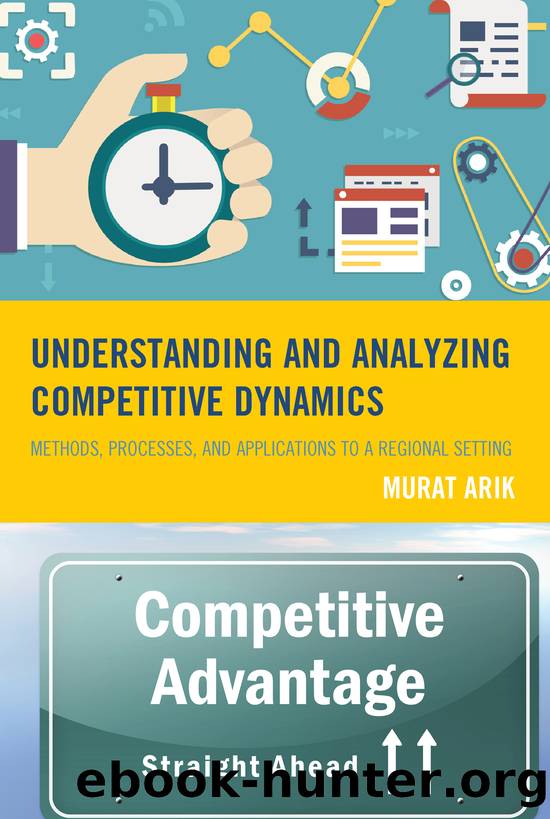Understanding and Analyzing Competitive Dynamics by Arik Murat;Livingston Steven G.;

Author:Arik, Murat;Livingston, Steven G.;
Language: eng
Format: epub
Publisher: Lexington Books
At the heart of the inputâoutput model is the flow of commodities from producers to final consumers. The total value of commodities produced is equal to total industry purchases, which comprise commodities, services, employment compensation, value added, and imports. The model itself is driven by final demand. The mechanism in the model captures linkages among industries by tracing all goods and services purchased by an industry to produce goods and services for final demand. This process of buying and selling stops at a certain point because of the outflows (leakages) from the region in the form of imports and value added. In addition to the IMPLAN database for the MTM region, we also utilize âindustry by occupational matricesâ from IMPLAN. Because these matrices are aligned with the IMPLAN sectoring scheme, they allow us to easily identify top occupations by given industrial clusters.
Model-Driven Regional Clusters
The methodology employed in this study combines Feser (2005) and Hill and Brennan (2000). In particular, the study comprises two stages: the first identifies industry clusters using IMPLAN inputâoutput data; the second extends the first-stage study by identifying the driver industry within each homogeneous cluster.
If two industries, i and j, are in the same cluster, they must exhibit one of the following patterns: (1) they have similarities in their procurement pattern; (2) they have similarities in their selling pattern; or (3) one industryâs procurement pattern is very similar to other industries selling pattern.
The industries in a given cluster have a more significant inputâoutput linkage with each other than with the industries outside the cluster. The initial attempt for the industry cluster study was made by Czamanski in the early 1970s. Czamanski (1974) started with a square inter-industry transaction matrix. Two ratios are calculated from the matrix:
Download
This site does not store any files on its server. We only index and link to content provided by other sites. Please contact the content providers to delete copyright contents if any and email us, we'll remove relevant links or contents immediately.
International Integration of the Brazilian Economy by Elias C. Grivoyannis(91286)
The Radium Girls by Kate Moore(11921)
Turbulence by E. J. Noyes(7936)
Nudge - Improving Decisions about Health, Wealth, and Happiness by Thaler Sunstein(7615)
The Black Swan by Nassim Nicholas Taleb(7010)
Rich Dad Poor Dad by Robert T. Kiyosaki(6405)
Pioneering Portfolio Management by David F. Swensen(6226)
Man-made Catastrophes and Risk Information Concealment by Dmitry Chernov & Didier Sornette(5921)
Zero to One by Peter Thiel(5686)
Secrecy World by Jake Bernstein(4646)
Millionaire: The Philanderer, Gambler, and Duelist Who Invented Modern Finance by Janet Gleeson(4376)
The Age of Surveillance Capitalism by Shoshana Zuboff(4210)
Skin in the Game by Nassim Nicholas Taleb(4162)
Bullshit Jobs by David Graeber(4095)
The Money Culture by Michael Lewis(4076)
Skin in the Game: Hidden Asymmetries in Daily Life by Nassim Nicholas Taleb(3929)
The Dhandho Investor by Mohnish Pabrai(3699)
The Wisdom of Finance by Mihir Desai(3654)
Blockchain Basics by Daniel Drescher(3507)
